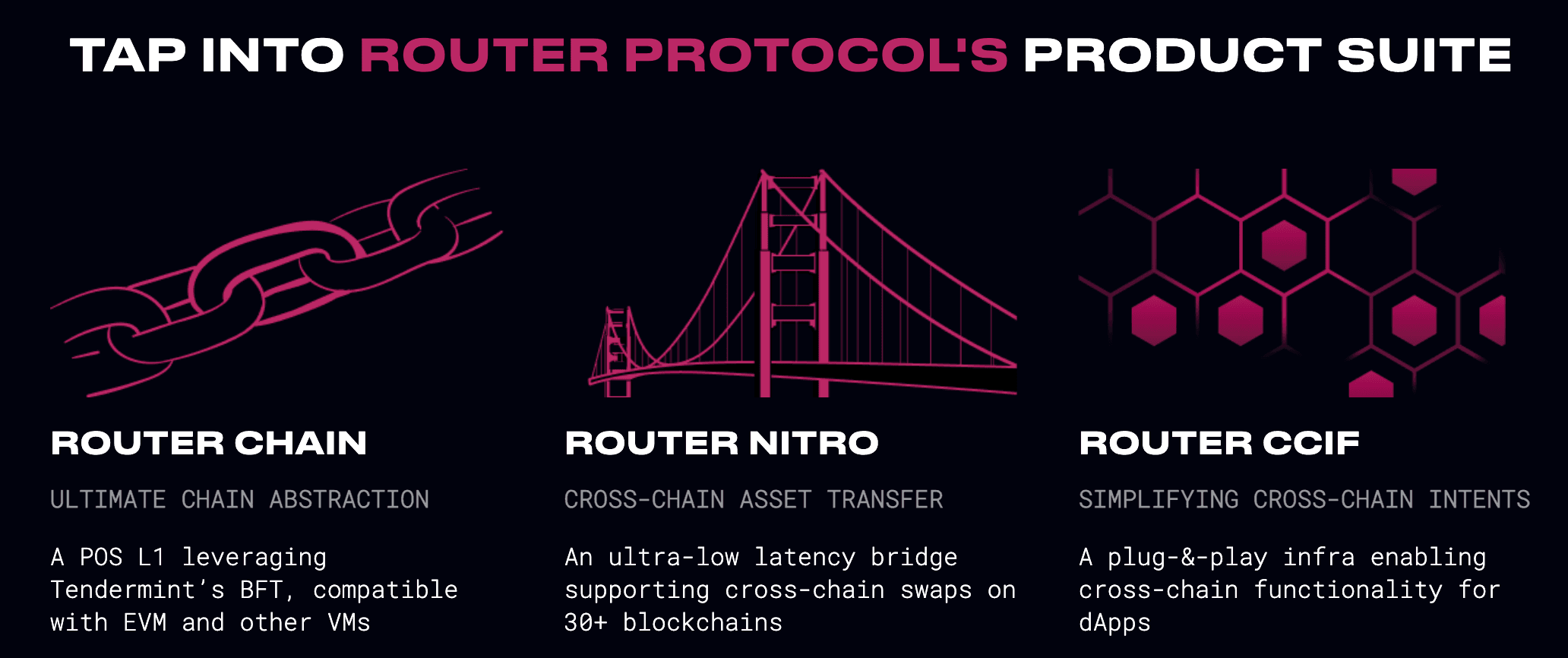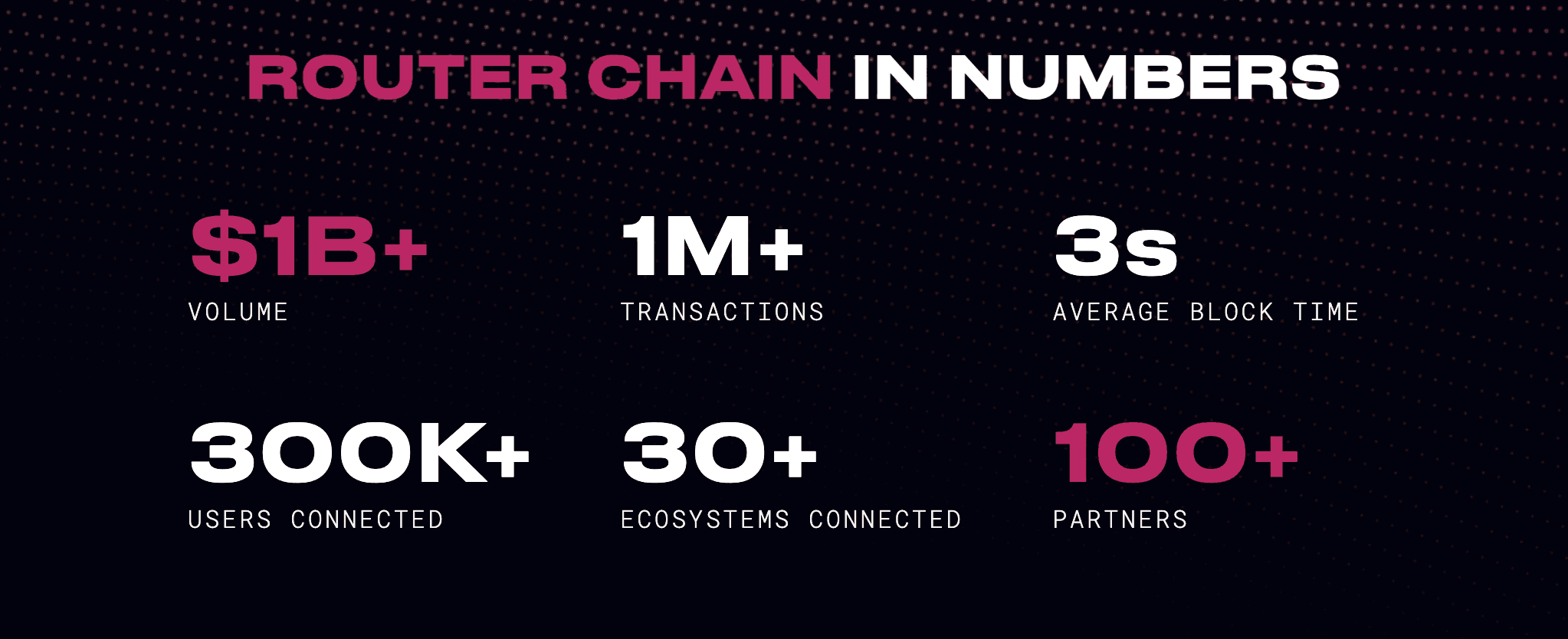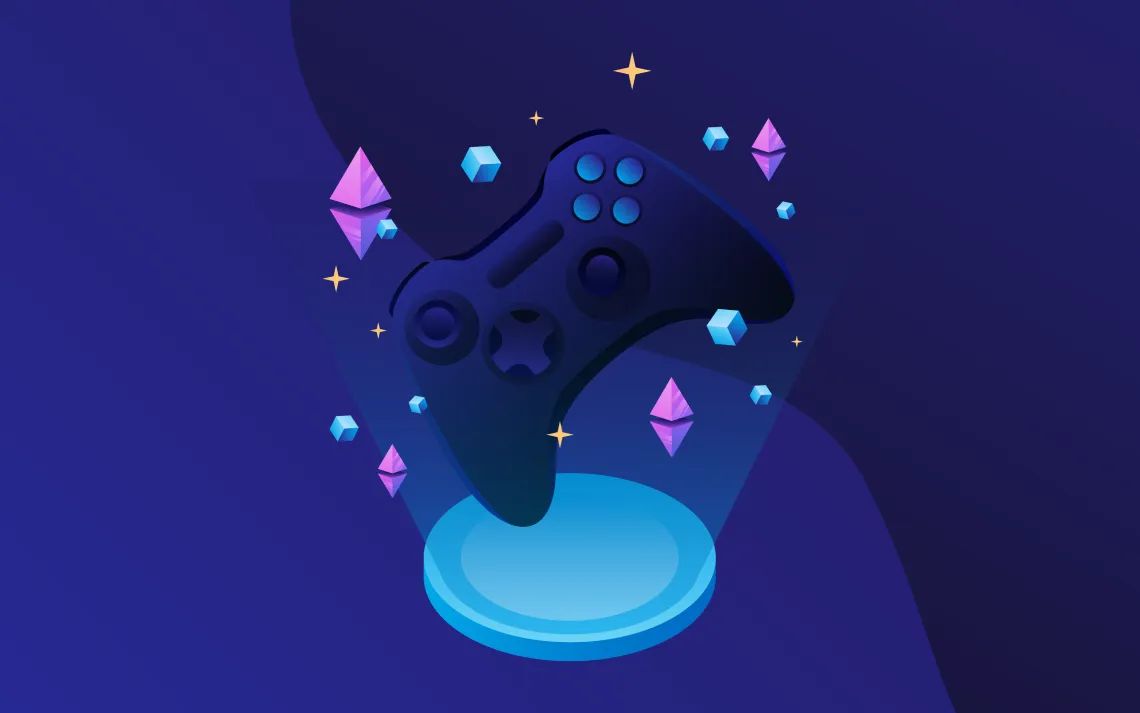Router Protocol, a decentralized protocol focused on chain abstraction infrastructure, has announced the mainnet launch of Router Chain, a Layer-1 solution designed to advance chain abstraction. This development aims to simplify cross-chain interactions and enable developers to build seamless, decentralized applications (dApps) across multiple blockchains.
First, What is Router Protocol?
Router Protocol is a chain abstraction protocol enabling developers to build intent-based products for cross-chain transfers and messaging in a secure, decentralized, and permissionless environment. Supported by notable investors, Router Protocol aims to enhance web3 adoption by addressing issues in cross-blockchain communications and scalability.

Blockchain Built for Chain Abstraction
Redefining Chain Abstraction
Router Chain addresses challenges in chain abstraction by simplifying cross-chain interactions. This reduces development barriers and allows dApps to interact with multiple blockchains and aggregate liquidity. Stateful bridging on Router Chain enables omnichain dApps, abstracting chains from users and aggregating liquidity. The Cross-Chain Intent Framework (CCIF) built on Router Chain allows users to interact with dApps from any blockchain, eliminating the need to be on the same chain as the application.
Competitive Edge and Use Cases
The mainnet launch introduces several enhancements, including Optimistic Reverse Verification for faster cross-chain transfers and Middleware Interceptors for customizable interactions. Fast finality for Layer 2 solutions offers flexible options for speed and security. Router Chain reduces transaction costs by 22% and uses ROUTE as a universal gas token for fee payments. The network operates under a Proof-of-Stake (PoS) framework, ensuring decentralization and enabling community governance with staking rewards.
- Canonical Bridges for Blockchains: Router Chain facilitates seamless communication and interaction between disparate blockchain networks and offers customized experiences.
- Omnichain Tokens (XERC20 compatible): Tokens that can be utilized and transferred in a truly omnichain environment, with support for alloyed assets in the Cosmos ecosystem.
- Chain Abstracted Experiences: Router Chain simplifies the user experience by abstracting the underlying chains with CCIF, making dApps more accessible and user-friendly. It also supports general message passing, allowing for seamless communication and interaction across different blockchains.
- Cross-chain Money Markets: Router Chain enables the creation of sophisticated cross-chain money markets, where assets from various blockchains can be lent, borrowed, and traded seamlessly.
- Shared Utilization: Developers can harness Router Chain to leverage the best of all worlds in creating versatile multi-chain dApps. They can store assets on Ethereum for optimal security and manage dApp data on Solana for cost-effective storage and rapid transaction speeds.

Tap into Router Protocol's Product Suite
Bridging Security to the Cosmos Ecosystem
Following the mainnet release, Router will launch a bridging solution to enhance security for Cosmos chains by leveraging Ethereum and Bitcoin networks. This approach reduces inflationary pressures associated with maintaining security, thereby strengthening the Cosmos ecosystem.
- Router Chain supports 30+ EVM and Non-EVM chains, including Cosmos chains, with over 7.9 million blocks produced and an average block time of 3 seconds.
- The platform acts as a canonical bridge for chains like Kyoto, Doge, Arthera, and Saakuru, and has strategic partnerships with Circle, Electron Labs, Silence Laboratories, Osmosis, and Okto.
- CCIF integrations include intent adapters for platforms such as Stakestone, Lido, Benqi, Velocore, and Aerodrome, enhancing cross-chain interactions.
- The Stakestone Intent Adapter has processed over $11 million in transactions and handled more than 24,000 transactions since its July launch.
- Nitro, a cross-chain bridge built on Router Chain, has facilitated over 1,000,000 transactions with a volume exceeding $600 million and serves more than 350,000 unique users.

Router Chain in Numbers
Final Thoughts
Router Chain's mainnet launch represents a notable development in blockchain technology, providing a practical solution for chain abstraction and cross-chain functionality. By addressing challenges such as interoperability, liquidity aggregation, and security, Router Chain aims to facilitate more efficient decentralized applications. The introduction of stateful bridging, CCIF, and other features simplifies the development process for dApp developers and enhances user experience across various blockchain ecosystems.
As Router Protocol continues to innovate and establish strategic partnerships, its efforts are expected to support the broader adoption and progression of web3 technologies. For more information please make sure to check the official website and social media channels here.




